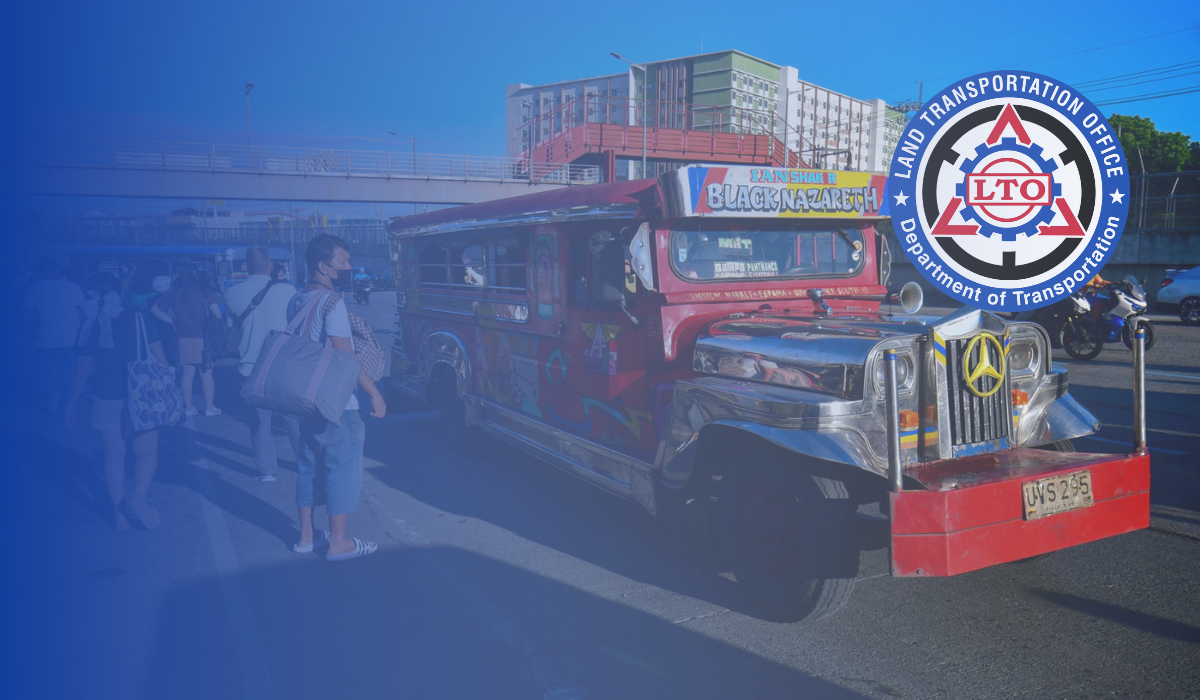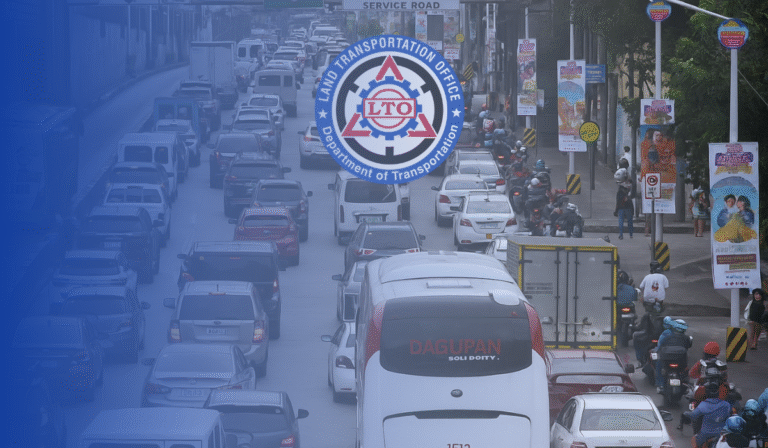LTO And LTFRB Crack Down on Overloaded Public Transport

LTO And LTFRB Crack Down on Overloaded Public Transport. The long-standing issue of overloaded public transport in the Philippines continues to plague daily commuters, especially during peak hours. It is not uncommon to see jeepneys, buses, and UV Express vehicles packed far beyond their intended capacities, putting passenger safety and convenience at significant risk.
In response, the Land Transportation Office (LTO) and the Land Transportation Franchising and Regulatory Board (LTFRB) have ramped up their efforts to strictly enforce anti-overloading rules, drawing mixed reactions from drivers, operators, commuters, and transport advocacy groups.
The Scope of the Overloading Problem
In Metro Manila and across the country, the sight of jeepneys and buses overloaded with passengers sometimes hanging onto the rear railings—is almost a cultural norm. But beneath this familiar scene lies a dangerous reality.
Modern jeepney driver Antonio Valos, who plies the busy Cogeo-Antipolo-Cubao route, describes the daily struggle:
“During rush hour, passengers have no choice. They have to get to work on time, so others choose to stand in the aisle even if it means squeezing tightly.”
Commuters like Pedro Nabas echo this, noting that the core issue isn’t discipline but lack of sufficient public transport units, especially during rush hours when demand peaks.
New Measures by LTO and LTFRB
Recognizing the danger posed by overloaded public transport, the LTO and LTFRB have doubled down on enforcing stricter anti-overloading rules. Under these guidelines:
| Type of Public Utility Vehicle | Maximum Passenger Capacity | Notes |
|---|---|---|
| Traditional Jeepneys | 12 to 32 passengers | Varies by manufacturer design |
| Modern Jeepneys | +5 standing passengers per sqm | Within designated standing areas |
| Buses | ~50 passengers | Standing passengers only within prescribed limits |
| UV Express (AUVs) | 9 passengers incl. driver | For standard AUV models |
| UV Express (Vans) | 10-12 passengers | Depending on van length and model |
LTO Chief Gregorio Pua recently announced that more inspection teams would be deployed, focusing not just on vehicle roadworthiness but specifically on passenger loads.
“Now, we will also have a team that will check public utility vehicles, especially on highways,” Pua said.
Meanwhile, the LTFRB emphasized that any driver or operator caught violating these capacity rules could face suspension or even revocation of their franchise their legal right to operate.
Why Is Overloading Dangerous?
LTFRB spokesperson Ariel Inton put it bluntly:
“When a public utility vehicle is overloaded, it becomes compromised. It’s no longer convenient or safe. Overloading can directly lead to road accidents.”
Indeed, overloaded vehicles experience excessive strain on brakes, suspension systems, and tires, increasing the chances of mechanical failures. Passengers standing in aisles or crammed together have fewer protections during sudden stops or collisions.
The Argument Against Fines: The Move as One Coalition’s View
While the crackdown by the LTO and LTFRB aims to protect commuters, it has sparked concerns among transport advocacy groups like the Move as One Coalition.
According to the coalition, simply imposing fines and suspending franchises does not tackle the root cause of overloading, which they identify as a chronic undersupply of public utility vehicles. They highlighted that this shortage is partly due to restrictive policies by the LTFRB itself, dating back from 1994 to 2017, which capped the number of operational franchises.
Their statement read:
“Such punitive measures will only add to the hardships of commuters and PUV operators and even worsen PUV overloading, which may put commuter safety at risk.”
Instead, they advocate for increasing the supply of PUVs on the road—particularly during rush hours—to address the demand.
How Can This Issue Be Solved?
1. Increase PUV Supply
The most straightforward solution is to allow more jeepneys, buses, and UV Express vehicles to operate. This means relaxing franchise restrictions and opening new routes to ease congestion on the busiest lines.
| Proposed Action | Potential Benefit |
|---|---|
| Issue more PUV franchises | More vehicles on the road, reducing waiting times and crowding |
| Encourage fleet modernization | Modern vehicles have clearer capacity controls and safety features |
| Subsidize operators to run during lean hours | Ensures constant availability even outside peak times |
2. Implement Smart Scheduling
Deploying more vehicles precisely when demand peaks—such as between 6 AM to 9 AM and 5 PM to 8 PM could alleviate crowding. Coordinating with large employers or schools to stagger start times can also reduce the demand surge.
3. Educate Passengers and Operators
Many passengers themselves insist on boarding overloaded vehicles to avoid being late. Driver education campaigns can help enforce the refusal of excess passengers, supported by commuter education programs that emphasize personal safety over speed.
The Balancing Act
For commuters like Pedro Nabas, the crackdown misses a key point:
“For me, there should be more public transport on the road. The problem only happens during rush hour. Vehicles are overloaded because everyone is trying to get home.”
Indeed, simply deploying more inspectors or issuing fines without addressing the demand vs. supply imbalance may create longer queues and ironically force more passengers to wait under harsh conditions, exposed to heat, rain, or unsafe streets.
Why This Matters to Economic Recovery
Addressing overloaded public transport is not just a matter of safety but also of economic productivity. If workers are delayed daily due to long waits or slower commutes caused by reduced loads, businesses suffer from lost hours. Moreover, accidents involving overloaded vehicles strain emergency services and hospitals.
The Role of Local Governments
Local governments can also step up by investing in infrastructure that supports efficient public transport, such as dedicated jeepney and bus lanes to reduce traffic delays. This encourages faster turnaround of vehicles, allowing more trips during peak hours.
Looking Ahead: A Call for Comprehensive Reform
The Philippines’ struggle with overloaded public transport is a multi-decade problem that requires multi-pronged solutions. While the LTO and LTFRB are right to enforce passenger limits for safety, the Move as One Coalition is equally right to demand a broader look at the systemic issues driving these violations.
A combination of:
- Increasing the number of franchises and routes
- Improving vehicle scheduling and fleet upgrades
- Educating both operators and commuters
- And continuing strict safety enforcement
could finally deliver the balance needed to make daily commuting safer, faster, and more dignified.
FAQs About LTO And LTFRB cracking down
Why is the LTO and LTFRB cracking down on overloaded public transport now?
Ans: The LTO and LTFRB intensified their crackdown after receiving a spike in complaints from commuters about overly crowded vehicles. They aim to prevent accidents and ensure passenger safety by enforcing long-standing anti-overloading rules.
How many passengers can modern jeepneys and UV Express vans legally carry?
Ans: Modern jeepneys can carry seated passengers plus standing passengers not exceeding five people per square meter. UV Express vehicles are capped at nine to twelve passengers depending on the model.
Will stricter enforcement solve the overloading issue?
Ans: Enforcement is critical for safety but by itself may not solve the problem. Transport advocates stress that the root issue is an undersupply of PUVs, especially during rush hours, so solutions should also include adding more franchises and improving scheduling.
Conclusion
The efforts by the LTO and LTFRB to crack down on overloaded public transport mark an important step toward safer roads. However, without addressing the systemic shortage of jeepneys, buses, and UV Express vehicles especially during peak times these measures risk penalizing drivers and commuters without truly solving the issue. It’s clear that a holistic approach involving expanded fleets, better scheduling, commuter education, and strict regulation is essential to break this decades-long cycle.






